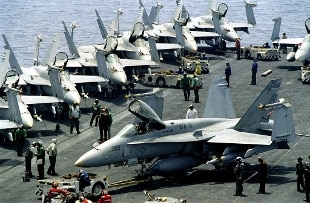Green light for UN Security Council resolution on Afghanistan
Share
August 30, 2021 With the departure of the last US planes from Kabul airport, the twenty-year campaign of the American armed forces in Afghanistan ends.
Operation 'Enduring Freedom' began on 7 October 2001, when, in response to the terrorist attacks of 11 September, the US attacked the Taliban in Afghanistan accusing them of providing cover for Al Qaeda.
The results on the ground seemed to come quickly. After the first air strikes on the Taliban positions, Western troops and their Afghan allies conquered one after another the strongholds of the regime, which capitulated on 9 December 2001 with the surrender of Kandahar and the famous escape by motorcycle of the Taliban leader, the Mullah. Omar. Shortly before that, the head of Al Qaeda, Osama bin Laden, had also left his underground hideout in Tora Bora and a transitional government had been installed.
However, it was only the beginning of an exhausting and very difficult attempt to stabilize a nation where the Taliban continued to control vast areas and militias loyal to Al Qaeda did not cease to sow terror. On August 8, 2003, the NATO mission began, after the then head of the Pentagon, Donald Rumsfeld, called the phase of "large-scale fighting" over.
As the country attempted a strenuous reconstruction, Bin Laden continued to show up with messages from unknown locations and the violence re-exploded in all its fury in 2006, a year marked by hundreds of suicide bombings and explosives attacks, a total fivefold in 2005. The allied coalition began to show cracks, with some states ceasing to hide the desire to get out. Meanwhile, the Taliban's consensus thrived on the number of civilian casualties caused by Western operations.
In 2009, the new tenant of the White House, Barack Obama, could only promise an ever more resolute commitment to Afghanistan, announcing the dispatch of another 17,000 soldiers to add to the 37,000 already present. At the end of the year, the US military deployed in the nation numbered 68,000. And Obama was forced to announce the dispatch of another 30,000 men, an escalation made necessary by a Taliban insurgency now out of control.
After the NATO summit in November 2010 which set for 2014 the transfer of control of the country to the government of Kabul, the turning point came in May 2011 with the killing of Bin Laden. Obama pledged to withdraw the additional 30,000 troops and in Washington the debate began to focus on the end of the mission. However, the situation was so unstable that another three years would pass before the US president drew up a calendar for the withdrawal of the bulk of the troops.
On January 1, 2015, Operation Enduring Freedom was replaced by Operation Freedom's Sentinel, with counter-terrorism activity and support and training of local forces as its main objectives.
When Donald Trump was sworn in as president on January 20, 2017, his retirement was largely over. The men on the ground had dropped to 9,000, accompanied by a similar number of contractors. The resumption of suicide attacks, however, prompted the new president to evaluate a new increase in personnel, based on the conditions on the ground. In January 2018, the Taliban launched an offensive that killed 115 people in the capital. Trump decided to focus on draining the militia's financial resources, destroying opium crops and cutting military assistance to Pakistan, accused of supporting extremists. The Taliban thus agreed to sit at the peace table. The historic negotiations began in Doha in February 2019 and are still ongoing,amid numerous difficulties and a resurgence of violence in the country and the advance of the 'Koranic students' from the countryside to the cities.
Overall, the campaign in Afghanistan cost the United States 785 billion dollars, according to figures released by the Pentagon: 587.7 billion for Operation "Enduring Freedom" and 197.3 billion for "Freedom's Sentinel".

